Intellectuals of all kinds and ages have often sought, carried away by fascination and an almost carnal love, to recount what they have seen and experienced in the city of Como. The shores of Lake Como have enchanted and engulfed great names including Pliny the Younger, who in a letter to his friend Caninius Rufus, dated between 96 and 100 AD, wrote with the sweetest admiration, “Since you have the time, why don’t you delegate modest and vile engagements to others, and claim for yourself the freedom to give yourself to the passions in that secluded and fertile corner of yours? This should be your engagement and your disengagement, this your toil and this your rest; when you are awake and when you are asleep, all your time should be devoted to the passions.” From here on were endless writers, musicians who loved Como, its villas and quiet idle corners with fierce passion, and our itinerary to discover the 10 must-see places in Como begins precisely with a consummate love affair between Hungarian pianist and composer Franz Liszt and Madame d’Agoult.
The architecture of Como Cathedral tells a story that has its roots in 1396 (the year its first stone was laid), and its construction will continue with perseverance and dedication until 1744 when it was finally completed. It will be, perhaps, also thanks to the relaxed and dreamy atmosphere described countless times by ancient travelers that its architecture presents itself as a harmonious coexistence of different styles and eras that do not compete with each other, but support and enhance each other becoming something unique and imposing itself to the sight of the most distracted passerby. A graceful feature of Como Cathedral is the famous frog door, which over the years has fueled various kinds of legends and conjecture. Some have thought that the frog, a symbol of metamorphosis, simply indicated the change that man sooner or later faces in life, while others with far more galloping imaginations were certain it indicated the sign of a hidden treasure, so much so that in 1852 a Ticino canon obtained permission to dig right under there, but without finding the hoped-for luck. The northern door was carved in 1507 by a workshop of artists active in the diocese of Como at that time, the Rodari, who decided to create an envelopment of figures that lead the eye to the triumph of the Assumption. Indeed, saints, angels, monsters, real and imagined animals and the now famous frog stand out.
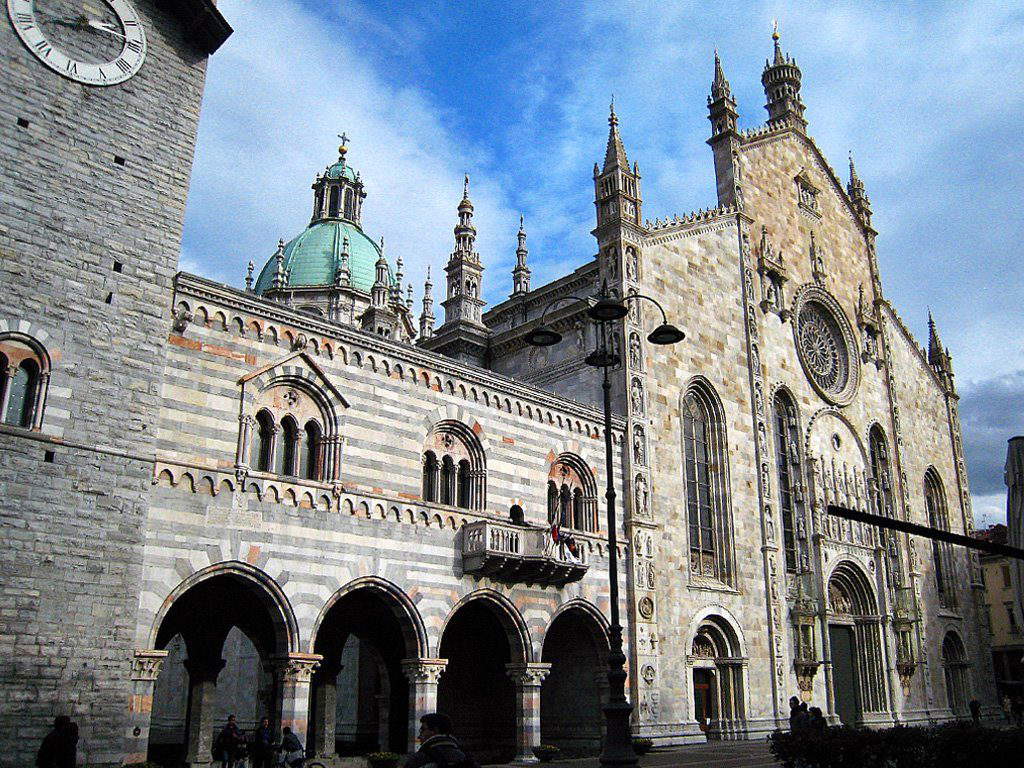
Right next to the ancient Cathedral stands the Palazzo del Broletto, which represents the symbol of municipal institutions and is strategically located between the Cathedral and the Bishop’s Palace. It is, again, a happy coexistence of different styles in fact in addition to being an interesting testimony to the medieval era it is also enriched with elements of Gothic style. The palace was the seat of municipal institutions during the 13th century and arose on the site previously used for town assemblies and, from what a plaque attests, the was probably completed in 1215 on the initiative of podestà Bernardo da Codazzo. The attentive traveler will notice how, on the walls, some traces of frescoes with the coats of arms of Como families are still preserved.

Just outside the city walls stands the imposing Basilica of Sant’Abbondio with its twin bell towers. A location, this one, decidedly strategic in medieval times as it guarded the Via Regina that connected Milan to northern Europe via the Alpine passes. As bare as it may seem, as soon as one crosses the entrance turning one’s gaze toward the apse one will discover a cycle of frescoes attributed to different masters among whom the presence of the strong and up-to-date personality of the “Master of St. Abbondio,” an artist active during the episcopate of Franciscan Leone Lambertenghi between 1315 and 1324, has been attested. The fresco presents twenty Gospel scenes in which, in the upper part, episodes from Jesus’ childhood are recognizable, while in the lower band the events concerning his earthly existence are narrated.
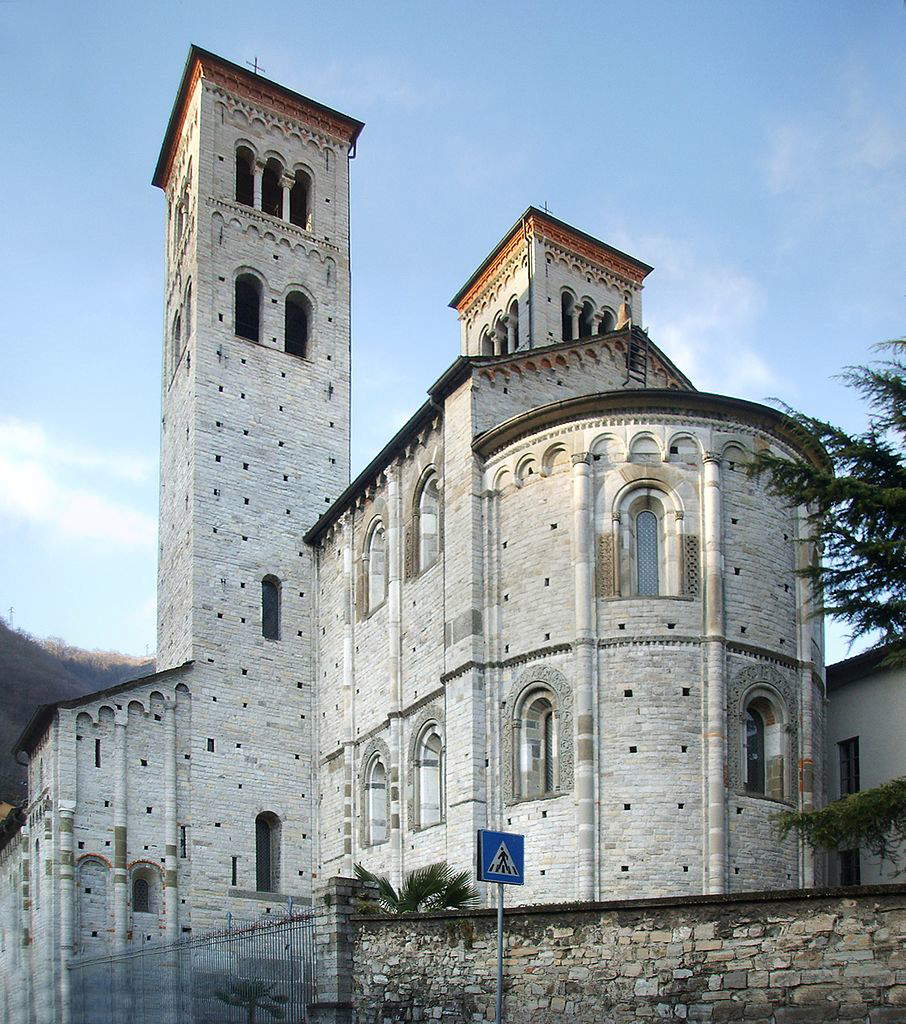
On Dec. 29, 1837, the celebrated Franz Liszt played at the Teatro Sociale in Como, and four days earlier, at the Albergo dell’Angelo, his daughter Cosima was born, the fruit of an affair with Genevan writer Marie de Flavigny, already married to the Count d’Agoult. The two took refuge in Como precisely to escape the gossip typical of large realities, and Liszt recounts, “When you write the story of two happy lovers set it on the shores of Lake Como. I know of no district more manifestly blessed by heaven; I have never seen another in which the enchantments of a life of love could appear more natural. In the midst of this friendly nature man breathes freely; the harmony of his relations with it is not disturbed by gigantic proportions; he can love, he can forget and enjoy, for he seems to do nothing but take his share of universal happiness.” The Teatro Sociale in Como, among the oldest in northern Italy, was inaugurated on August 28, 1813, and is also known as the “little Scala,” because after the bombing in 1943, it housed the very Teatro alla Scala in Milan. The project, the main hall of which currently presents the shape of a cello case, was entrusted to architect Giuseppe Cusi and was briskly supported by Alessandro Volta, who was then president of the city council.
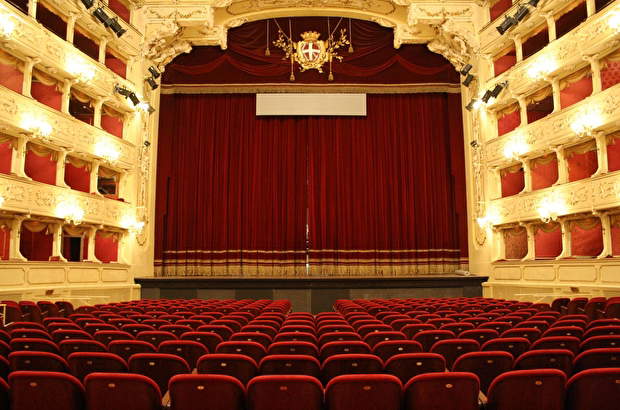
Commissioned in the early 17th century by prelate Marco Gallio, Villa Gallia stands on the ruins of the villa-museum of humanist Paolo Giovio. Torn frescoes on the second floor depicting the villa as a three-story dwelling, with an ashlar portal on the ground floor, could delineate its original appearance. There were many alterations during the nineteenth century at the hands of Simone Cantoni, who oversaw the southern extension in the neoclassical style, first, and by Baron Simone Leonino, through changes to the exterior ornamentation and the dockyard, later.On the piano nobile, in five rooms, it is still possible to admire the original fresco cycles of which it is not possible to know the authors, except for the Sala dei Putti where, on in frieze, the initials “BR” appear, which could indicate the painter Battista Recchi also because of the countless stylistic, chromatic and repertoire assonances.

In 1903, restorations began on the Baradello Castle that put a faint light on its history, discovering, for example, that the earliest evidence was in pre-Roman times (as attested by the various archaeological findings), or again that in 1158 the walls were enlarged and some towers were rebuilt at the behest of Frederick Barbarossa and that the tower, which we see soaring overbearingly today, was erected by the Visconti family. In short, that of Baradello was a complex story precisely because it stood in a strategic position and, over the centuries, has dominated the town and the first basin of the lake from above, while today it offers a spectacular view that can be reached through a small path that winds, climbing, through the woods. Like any self-respecting castle, it also possesses its ghosts, and according to a macabre legend, in fact, Napoleon Torriani, was imprisoned in the “crypt of the manor” during the battle of Desio and eighteen months later, alone and in the grip of madness, decided to end it all by smashing his head against the bars. According to popular stories, however, he would never be able to find peace as his ghost would still wander agonizingly within these walls.

A decidedly more sweetened story is the one told at Villa Olmo, which is among the most important symbols of the city of Como. The sumptuous mansion was built in the 18th century as a suburban residence and, according to an undocumented tradition, owes its name precisely to two very old and gigantic elm trees that towered in the garden. The villa belonged to a very wealthy family that acquired property and land from the abbey of Santa Maria di Vico in 1664 and was commissioned by Innocenzo Odescalchi to be built by Ticino architect Simone Cantoni between 1782 and 1787. The inspiration is strongly neoclassical and is fully manifested in its delicate facade, which features five entrance arches surmounted by six Ionic columns interspersed with medallions representing philosophers. In 1925 it was given to the Municipality of Como, and two years later, on the occasion of the first centenary of Alessandro Volta’s death, the International Voltian Exhibition was staged here.
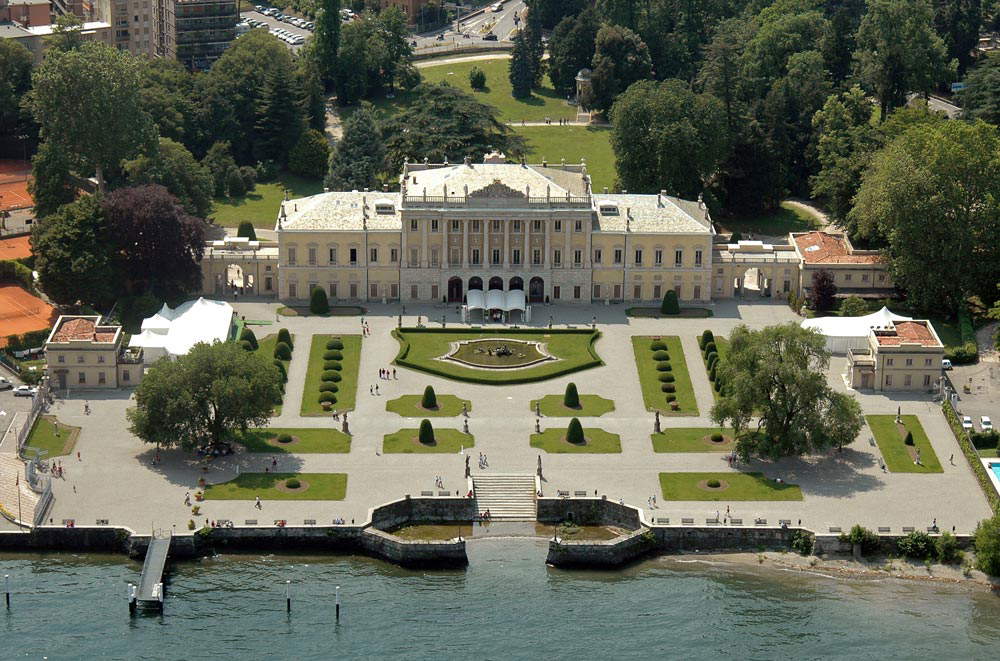
Also on the occasion of the celebration of the 100th anniversary of Alessandro Volta’s death, industrialist Francesco Somaini donated this neoclassical building on the shores of the lake to the city of Como in 1928, and it is the only mausoleum in the world to commemorate a scientist. The building, as its architect Frigerio states, “consists essentially of a circular hall almost 12 meters in diameter net, crowned by a dome with a central light, in the guise of a Pantheon; which, with the colonnade that encloses it.” And, paraphrasing his words, its facade was to look at those arriving from the city, thus creating a natural promenade to the temple. Inside is articulated Volta’s museum, where the devices he invented and actually used are on display, while the gallery in the loggia is reserved for the documentation of the Como physicist’s scientific work where there is also no shortage of personal items, medals, documents, books and photographic reproductions.

Famed architect Daniel Libeskind also decided to honor Alessandro Volta by donating one of his works to the city of Como, and the author himself explains how it “is inspired by the electrical voltage between two poles of a battery, Volta’s great gift to humanity. The work connects the elements: light, wind and water. An installation, a physical and ideal gateway open to the twenty-first century.” The work rises, most elegant and sinuous, from the center of the first basin of Lake Como and is perfectly visible from Piazza Cavour. With its soaring height exceeding sixteen meters, it presents the shape of two sinusoids that contrast and play off each other, delicately fitting into the surrounding landscape, harmoniously blending scientific and natural elements.

At the top of Mount Three Crosses is the Voltiano Lighthouse, also built in 1927 to celebrate the centenary of Alessandro Volta’s death, and can be reached from Como on foot or by its very special cable car that connects the town to the hamlet of San Maurizio. Despite being architecturally a lighthouse, it has no practical use in navigation and alternating green, red and white beams of light has the sole commemorative purpose. A curiosity: the father of actress Mara Berni, a well-known face in the 1950s and 1960s who acted alongside Alberto Sordi and Totò, participated in its construction, and she was born here on June 12, 1935.
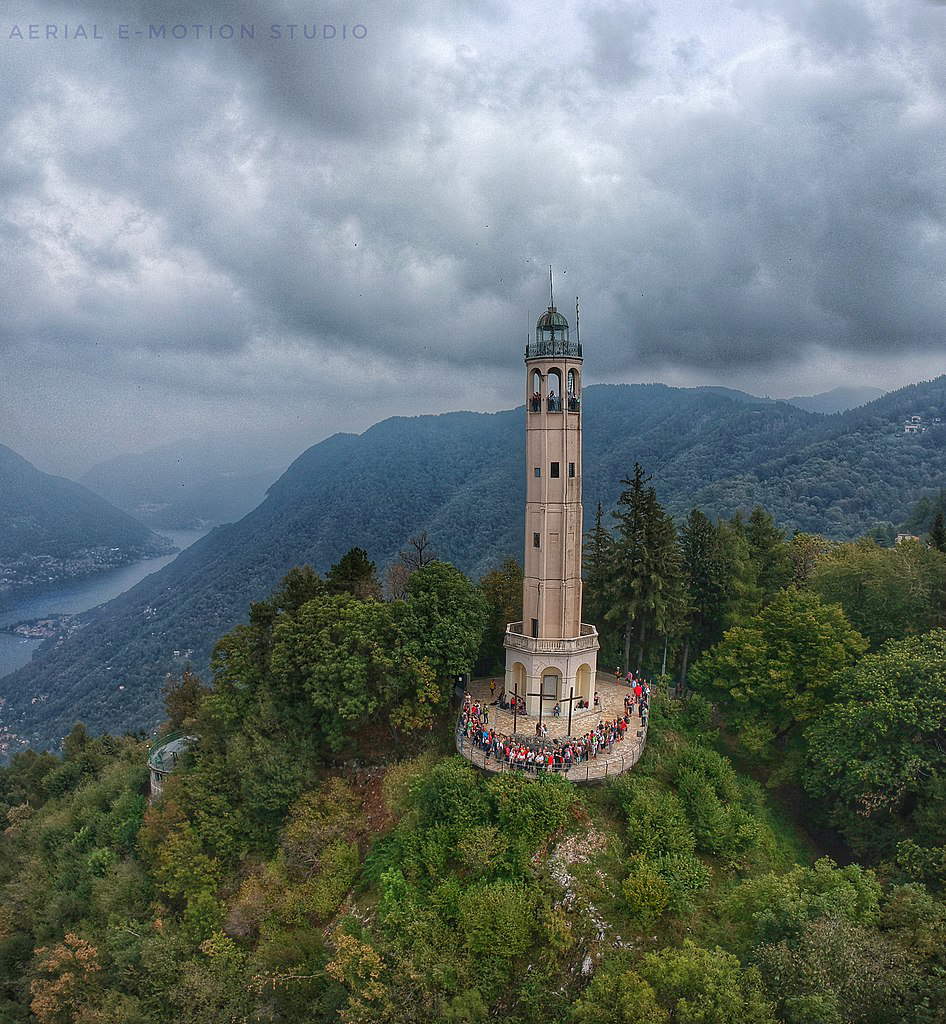
 |
| Como, what to see: 10 must-see places in the city |
Warning: the translation into English of the original Italian article was created using automatic tools. We undertake to review all articles, but we do not guarantee the total absence of inaccuracies in the translation due to the program. You can find the original by clicking on the ITA button. If you find any mistake,please contact us.